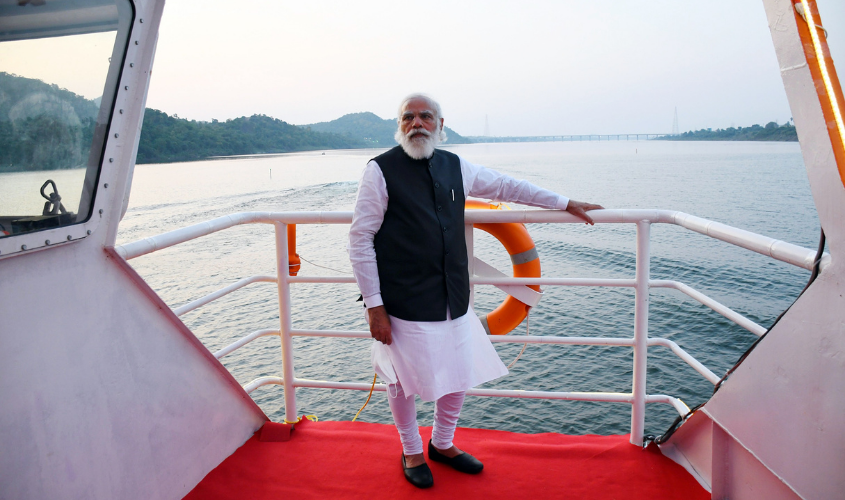Globally, PE is at an inflexion point with vast troves of dry powder (un-invested capital) at $1.45 trillion as of June 2020 (Preqin data), keenly watching India, as one of the most promising emerging economies.
COMING TOGETHER IS A BEGINNING
Since liberalisation in 1991, India has turned around its attractiveness to foreign investors. Despite systemic inefficiencies, rent-seekers and lax contract-enforceability; the “upside premiums” have been quite hard for funds to resist.
Sovereign funds, pension funds, venture capitalists alike have flocked to India over the last two decades. Direct investments from the United States to India have risen from just over USD 2 billion in 2002 to over USD 45 billion in 2019.
Prime Minister Narendra Modi earlier this week specifically cited FDI inflows (at record high despite pandemic), and manufacturing, as two levers for an economic bounce-back; further suggesting push on investment and infrastructure to become the driving force for recovery and growth.
However, one specific class of investors is yet to dip their toes fully—private equity (PE).
Globally, PE is at an inflexion point with vast troves of dry powder (un-invested capital) at $1.45 trillion as of June 2020 (Preqin data), keenly watching India, as one of the most promising emerging economies.
PE /VC funding has been a major source of FDI for India over the last two decades, providing $194 billion from 2010 to 2019 per IVCA-EY data. Although the period Jan-Sep 2020 has seen a pandemic induced dip to $17.2 billion, the appetite for investment is only growing.
India’s bold and assertive geopolitical stance, impetus given to domestic production, focused investment in growth of technological and financial ecosystems to reduce dependence on financial “superpowers”, and ambitiously adapting to unprecedented upsurge in consumption patterns, heralds the emergence of a confident self- assured nation that has come into its own.
STAYING TOGETHER IS PROGRESS
PM Narendra Modi’s call to “Make in India” is way too ambitious to be funded solely through domestic sources of capital.
The PE industry in India has evolved to granular levels, where investments are segregated as seed capital, venture capital, growth private equity or buyouts. It drives job creation and grows business. As large conglomerates focus on the core and look to divest non-core assets, and as government seeks disinvestments, PE could be the solution; help reduce deficit, professionalise the way companies are managed in future, and provide shareholder value and investment returns.
How India harnesses this opportunity will make all the difference.
WORKING TOGETHER IS SUCCESS
On the cusp of exponential growth, India’s ambitious efforts—Digital India, Make in India, Atmanirbhar Bharat, present symbiotic opportunities between emerging enterprises and PE funds.
Here are five-simple suggestions to create a more conducive policy and governance environment towards PE.
- Taking a leaf out of successful outreach events conducted in the past, hosting a big bang annual “India-Global PE Investor confluence” with the global investor community would be a good way to show India’s intent to partner and work together. Establishing rapport will be the first step in this direction. A golden platform to engage, India can present its investment opportunities across specific sectors of national importance in a structured manner. This transparency, granularity of opportunity, clarity on implementation modality, regulatory/ tax/ compliance and other aspects, will be tremendously useful from an investor’s perspective.इस शब्द का अर्थ जानिये
- An India focused platform providing ongoing engagement for investors, industry and entrepreneurs will help keep the flame alive long after the annual outreach event. Additionally a multi-pronged focus including structured raising of funds, and helping Indian promoters, businesses and entrepreneurs understand what global investors are looking for, will be effective. Several PE deals in India fall apart at the due diligence stage, with corporate governance often cited as the deal breaker. Opportunities exist for independent service providers to build credible governance practices, and expedite transaction closure. Guidance on ESG (Environmental Social and Governance) criteria plus a collaborative and consultative strategic advisory on disinvestments, can be another focus area for the platform.
- Structural clarity on processes, procedures, legal and regulatory requirements at the outset, conveying India’s vision, will quell investor nervousness, stemming from continuously changing rules and regulations seen in the past. Positive reforms, and established case laws around the legal framework will provide much needed comfort to many investors.
- PE zones (akin to SEZs) with creative sops maybe considered. With shifting focus of PEs to Impact/ Value Investing, and the overall count of wealthy Indians on the rise, a concerted effort to engage with wealth creators/ foundations, for a dialogue on meaningful philanthropy, understand tax disincentives preventing increased giving, is the need of the hour. Incentivising altruistic pursuits of the super wealthy, may help channel funds into several of India’s deserving and underserved sectors.
- As is the case with any enterprise, some are bound to fail. India’s historic record with splits of JVs, plough backs, IP violations, and others have been far from stellar. Setting up empowered arbitration channels to fast track issue resolution, aligned to global norms and timelines, will be a huge signal that India is ready for business.
Achieving this tactical collaboration will be a win-win-win for the nation, domestic industry and investors alike. As they say, we don’t win on emotion, we now need to win on execution.
Sripriya Menon is a financial industry expert with experience in the World Bank, Deutsche Bank & Credit Suisse.

